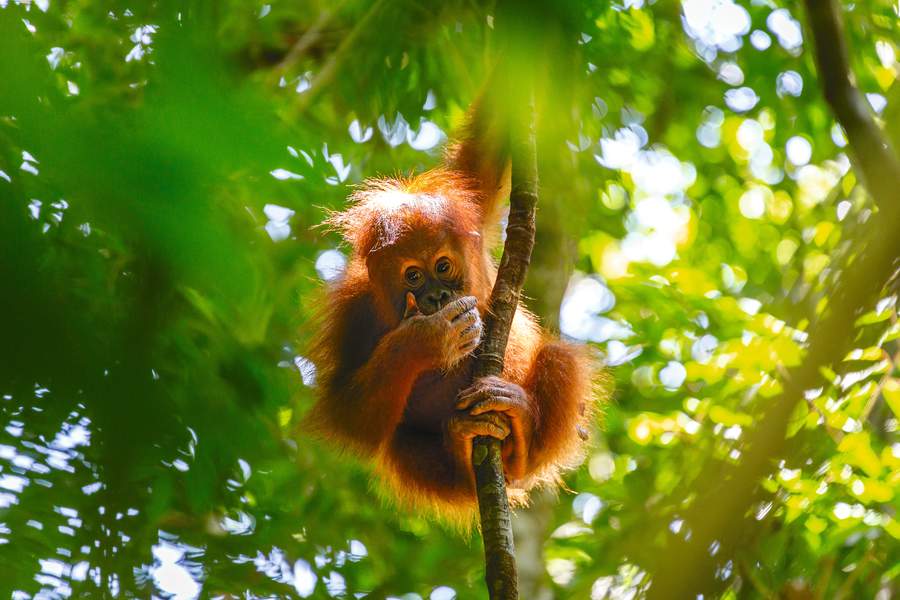Is palm oil really that bad?
Palm oil has been hitting the headlines for years now, but the issue isn’t as black and white as it might seem
While the debate may have only entered the spotlight in the last few years, the oil at the centre of it has been around for a long time. The African oil palm (Elaeis guineensis) is native to West Africa, and the oil made from its fruit pulp and kernel has been used by humans for at least 5,000 years. Oil discovered in an ancient Egyptian tomb suggests that palms and fruit were being transported and traded by people as far back as 3,000 BCE.
Today, 85 per cent of the world’s palm oil comes from Malaysia, where almost 14 per cent of the country’s total area is made up of oil palm plantations. The plant is easy to grow and care for, making it an ideal crop for both small-scale farmers and large plantations. The oil has many properties that make it useful; it’s smooth, virtually tasteless and semi-solid at room temperature, and it contains vitamins A and E. Most importantly, it’s extremely land-efficient and yields up to 30 times more oil per hectare than other vegetable oil crops.
The problem
Efficient, useful and versatile, palm oil sounds like the perfect product, so why has it become the subject of such controversy? Much of the debate surrounds the deforestation caused by the palm oil industry. While the crop requires less land than other oil-producing plants, it does still need somewhere to grow, and the rocketing demand has resulted in the clearing – both legally and illegally – of huge areas of rainforest.
From 1989 to 2000 the area of land converted for palm oil more than tripled in Indonesia. Malaysia lost an average of 0.65 per cent of its forests annually between 2000 and 2007. Clearing this established habitat hugely reduces the biodiversity of an area and destroys the homes of the precious species living there. Displaced animals wandering into plantations in search of food or shelter can often find themselves in trouble, as farmers will hurt or even kill them in order to defend their source of income. Some shocking predictions give orangutans and Sumatran tigers just a few more years of life in their natural wild habitats if deforestation continues at its current rate.
Having previously been listed simply as vegetable oil, it wasn’t until a 2014 EU law was passed on food label clarity that consumers began to realise just how many products contain palm oil. Even now, the full scale of the issue is often not understood because manufacturers can list ingredients derived from palm oil under alternative names like sodium kernelate and sodium lauryl sulfate.
Many media sources have turned palm oil into something of a scare story, omitting important information and painting the oil as entirely bad. Ever since it entered the spotlight there have been frequent calls for a total ban, but this is unlikely to solve the problem. Millions of people now rely on palm oil for their income, and it’s a significant contributor to several developing nations’ economies.
Of all the land used to produce vegetable oils, palm oil currently grows on just five per cent and produces almost 40 per cent of global supply. To meet demand with other plants, much more space would be needed and more forest would be cleared.
The solution?
A key focus of the movement towards sustainable palm oil production is the use of grassland and degraded land for new plantations rather than disturbing pristine forest. Managed carefully, this use of open areas of land could protect remaining rainforest and avoid further conflict between people and wildlife. Organisations are involving local stakeholders in the change to responsible growing and working to ensure plantation employees are operating in safe and fair conditions. Using natural resources like water carefully and making sure there is transparency at every stage of production are also crucial to minimising the negative impacts of this valuable crop.
For more science and technology articles, pick up the latest copy of How It Works from all good retailers or from our website now. If you have a tablet or smartphone, you can also download the digital version onto your iOS or Android device. To make sure you never miss an issue of How It Works magazine, subscribe today!
To celebrate Earth Day, why not reduce magazine paper waste and go digital with an extra 20% off? Enter GODIGITAL20 at the checkout.






